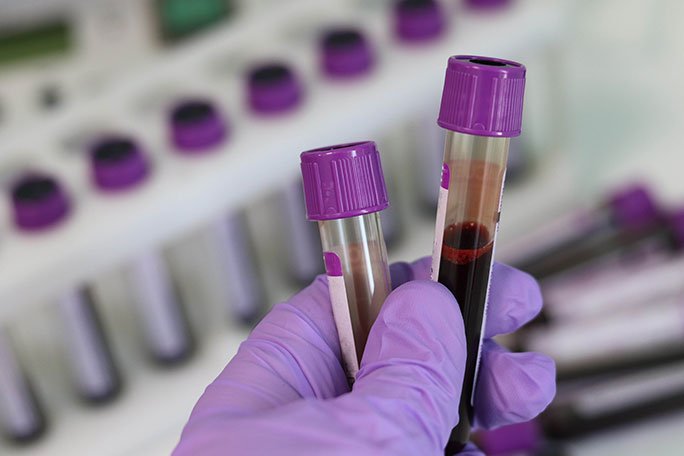Ensuring Compliance with Documentation Requirements in Hospital Procurement Audits
Summary
- Hospitals must ensure compliance with strict documentation requirements during procurement audits for supplies and equipment.
- Proper documentation is crucial for maintaining transparency, accountability, and efficiency in the procurement process.
- Hospitals employ various strategies and tools to streamline documentation processes and meet audit requirements effectively.
The Importance of Compliance with Documentation Requirements
Hospitals in the United States are subject to stringent Regulations and oversight when it comes to procurement audits for supplies and equipment. Compliance with documentation requirements is crucial for several reasons:
Transparency
Proper documentation ensures transparency in the procurement process by providing a clear record of transactions, approvals, and decision-making. Transparency is vital for maintaining the integrity of the procurement process and ensuring that all actions are conducted in a fair and ethical manner.
Accountability
Documentation requirements help to establish accountability for decisions made during the procurement process. By maintaining detailed records of transactions and approvals, hospitals can hold staff members and vendors accountable for their actions and ensure that resources are used responsibly.
Efficiency
Effective documentation practices can streamline the procurement process and make it more efficient. By maintaining accurate and up-to-date records, hospitals can quickly access information when needed, reducing the time and resources required to complete audits and respond to inquiries.
Strategies for Ensuring Compliance with Documentation Requirements
There are several strategies that hospitals can employ to ensure compliance with documentation requirements during procurement audits for supplies and equipment:
Implementing Electronic Document Management Systems
Electronic document management systems (EDMS) can help hospitals organize and store procurement-related documents in a centralized and secure location. EDMS software can automate document retention policies, facilitate version control, and provide audit trails to track document changes and access.
Standardizing Documentation Procedures
Standardizing documentation procedures can help hospitals establish clear guidelines for documenting procurement-related activities. By creating standardized templates and forms for documenting transactions, approvals, and communication, hospitals can ensure consistency and completeness in their documentation practices.
Training Staff on Documentation Requirements
Training staff on documentation requirements is essential for promoting compliance and accuracy in the procurement process. Hospitals should provide ongoing education and training to staff members involved in procurement to ensure they understand the importance of proper documentation and know how to fulfill their documentation responsibilities.
Conducting Regular Audits and Reviews
Regular audits and reviews of procurement documentation can help hospitals identify gaps, errors, and inconsistencies in their documentation practices. By proactively reviewing documentation and addressing any issues that arise, hospitals can ensure that their documentation is accurate, complete, and compliant with regulatory requirements.
Engaging with Vendors and Suppliers
Collaborating with vendors and suppliers on documentation requirements can help hospitals streamline the procurement process and ensure that all necessary documentation is provided in a timely manner. Hospitals should work closely with vendors to establish clear expectations for documentation and communicate any specific requirements or guidelines.
Tools for Streamlining Documentation Processes
There are several tools and technologies available to help hospitals streamline their documentation processes and meet audit requirements effectively:
Procurement Management Software
Procurement management software can help hospitals automate and standardize the procurement process, including documentation requirements. These tools can centralize procurement-related information, track approvals and purchases, and generate reports to support audit compliance.
Electronic Signature Solutions
Electronic signature solutions enable hospitals to obtain legally binding signatures on procurement documents electronically. These tools can streamline the approval process, reduce paperwork, and ensure that all necessary signatures are obtained in a timely manner.
Cloud-Based Document Storage
Cloud-based document storage solutions allow hospitals to store and access procurement-related documents securely from anywhere with an internet connection. These tools provide scalability, accessibility, and disaster recovery capabilities to ensure that documents are protected and available when needed.
Collaboration Tools
Collaboration tools such as shared drives, project management platforms, and communication apps can facilitate collaboration and communication among staff members involved in procurement. These tools can streamline document sharing, approval workflows, and feedback processes to enhance efficiency and transparency in the procurement process.
Conclusion
Ensuring compliance with documentation requirements during procurement audits for supplies and equipment is essential for hospitals to maintain transparency, accountability, and efficiency in their procurement processes. By implementing strategies such as electronic document management systems, standardizing documentation procedures, training staff, conducting regular audits, and engaging with vendors, hospitals can streamline their documentation processes and meet audit requirements effectively. Utilizing tools such as procurement management software, electronic signature solutions, cloud-based document storage, and collaboration tools can further enhance hospitals' ability to comply with documentation requirements and ensure a smooth and transparent procurement process.

Disclaimer: The content provided on this blog is for informational purposes only, reflecting the personal opinions and insights of the author(s) on the topics. The information provided should not be used for diagnosing or treating a health problem or disease, and those seeking personal medical advice should consult with a licensed physician. Always seek the advice of your doctor or other qualified health provider regarding a medical condition. Never disregard professional medical advice or delay in seeking it because of something you have read on this website. If you think you may have a medical emergency, call 911 or go to the nearest emergency room immediately. No physician-patient relationship is created by this web site or its use. No contributors to this web site make any representations, express or implied, with respect to the information provided herein or to its use. While we strive to share accurate and up-to-date information, we cannot guarantee the completeness, reliability, or accuracy of the content. The blog may also include links to external websites and resources for the convenience of our readers. Please note that linking to other sites does not imply endorsement of their content, practices, or services by us. Readers should use their discretion and judgment while exploring any external links and resources mentioned on this blog.
